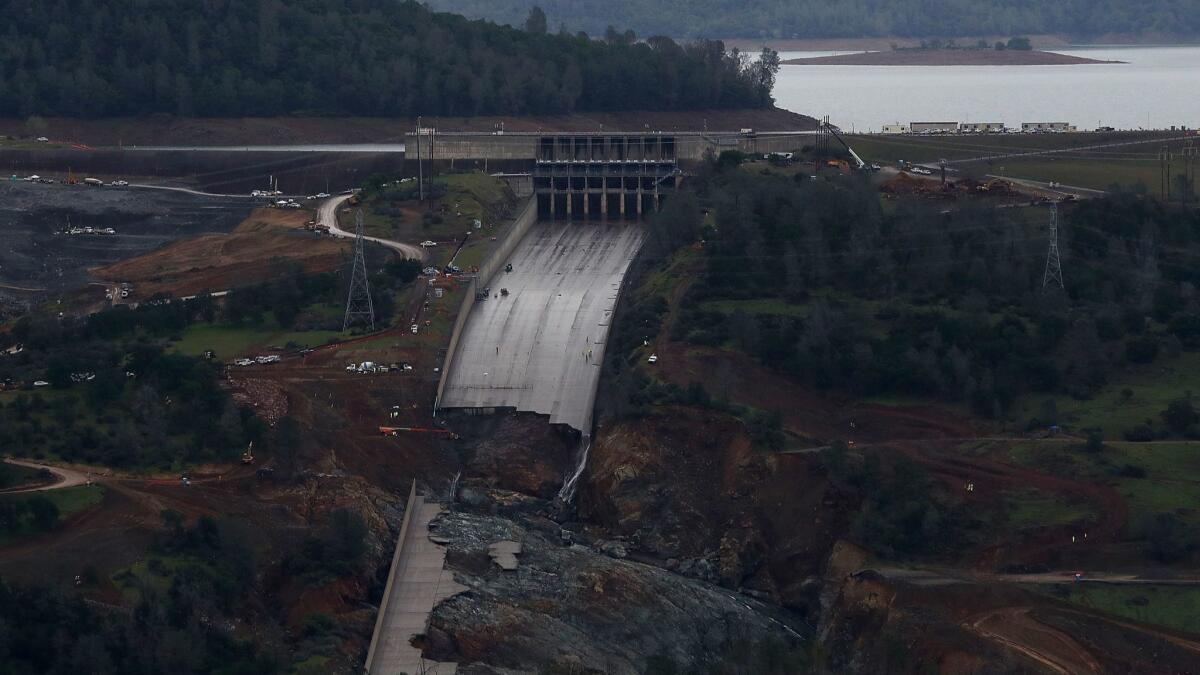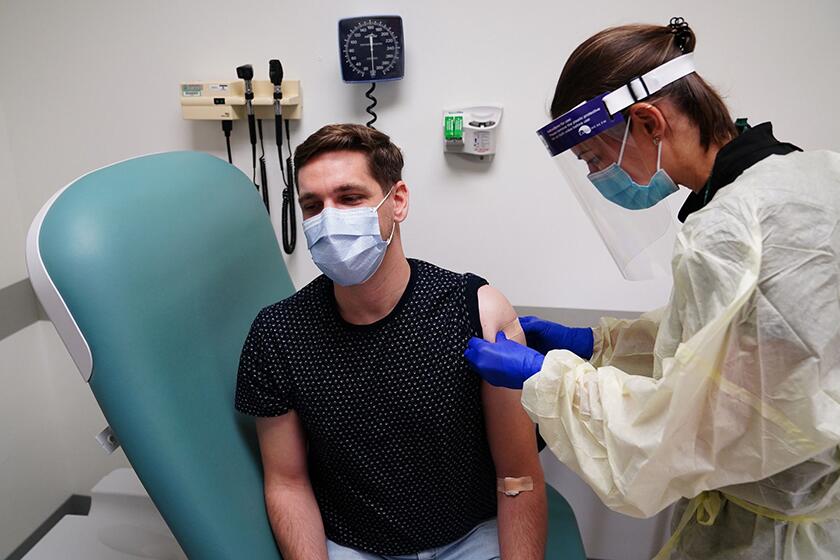Readers React: Recharging groundwater reserves, not building new reservoirs, is key to California’s water future

- Share via
To the editor: Your editorial, “California is dammed enough already,” raises some important points about improving our water future. The state faces a chronic problem that will only get worse with climate change: depleted groundwater supplies. Groundwater is the lifeline communities and farmers turn to in drought.
The good news is there’s an untapped solution under our feet called groundwater recharge, which is much cheaper than building new surface reservoirs, has few environmental hurdles and can be implemented relatively quickly. There’s also three times more water storage capacity underground than in all of California’s surface reservoirs combined.
A recent Public Policy Institute of California study found that more recharge occurred in the San Joaquin Valley last year than since the start of California’s last drought, with the region experiencing its first positive groundwater balance since 2011. The PPIC estimates that up to 25% of the valley’s groundwater deficit could be made up by capturing unused water underground.
Lawmakers, agencies, the farming industry and others should work together to capture all we can underground for the dry years ahead.
Ashley Boren, San Francisco
The writer is executive director of the group Sustainable Conservation.
..
To the editor: The Los Angeles Times is right to call for water projects that “repair environmental damage rather than inflict it.” I find it bizarre and contradictory, then, that The Times missed the fact that the proposed Sites Reservoir meets all its criteria.
Don’t dam rivers? Check. Sites would be an off-river reservoir.
Repair environmental damage? Check. Sites water would ensure that cool, high-quality water is available at critical times to sustain smelt and salmon populations and habitat.
Paid for by those who will use it? Check. Sites partners will provide funding, with the exception of what the state of California invests for broad environmental benefits, which are many.
Spend our resources where the water is? Check. Sites isn’t a classic snowmelt capture reservoir. It is designed to capture the increasing amount of precipitation that will fall as rain in heavy “atmospheric rivers,” which will be California’s new normal.
It is The Times, not Sites, that is locked in the past.
Robert Dugan, Sacramento
The writer is senior vice president for public policy and economic development at the Sacramento Metro Chamber of Commerce.
Follow the Opinion section on Twitter @latimesopinion and Facebook
More to Read
A cure for the common opinion
Get thought-provoking perspectives with our weekly newsletter.
You may occasionally receive promotional content from the Los Angeles Times.









